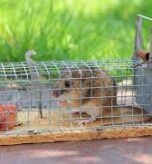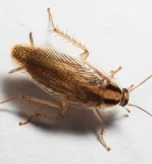The presence of rodents in a home is a common concern, especially when you have young children. While you need to manage potential pest issues, the safety of your children is the top priority. This makes selecting the right child safe mouse traps a critical decision. Many parents are uncomfortable with traditional options like sticky traps or poisons due to the risks they pose to curious kids. This guide provides a professional overview of effective and child safe mouse traps and solutions.
Humane and Child Safe Mouse Traps
For those who want a non-lethal solution, humane trapping is a viable and safe alternative in a home with children.
Live Catch and Release Traps
Live catch traps are designed to capture mice without causing them harm, allowing you to release them away from your property. These traps often look like small boxes with the closing mechanism placed deep inside to prevent a child from accidentally triggering it.
- Design: Mice enter through a one-way door that prevents their escape. Many of these models are endorsed by humane societies.
- Safety: These traps are safe for children and pets because they eliminate the risk of physical injury or exposure to toxins. They also allow for disease-free handling, as you do not need to touch the captured mouse.
- Monitoring and Release: You must check these traps regularly, ideally multiple times a day. Release any captured mice promptly at least one mile away from your home in a wooded area.
DIY Humane and Child Safe Mouse Traps
You can construct several effective and child safe mouse traps using common household items.
- The Paper Towel Roll Method: Balance an empty paper towel roll, baited with peanut butter, on the edge of a counter over a tall trash can. When the mouse enters the roll to get the food, its weight will tip the roll, and both will fall safely into the can.
- The Repeating Bucket Trap: You can transform a five-gallon plastic bucket into a reusable, humane trap. By drilling holes near the rim, you can thread a wire through to support a baited, balanced plate or can. When a mouse walks onto the plate, it tips, dropping the mouse into the bucket. To keep it humane and child-safe, do not add water.
Using Repellents to Keep Mice Away
Repellents aim to deter mice from entering your home in the first place.
- Ultrasonic Devices: These electronic units emit high-frequency sound waves that are inaudible to humans but create a stressful environment for mice. They are a safer alternative to poisons.
- Scent-Based Repellents: Mice have a strong sense of smell, making certain scents effective deterrents. Pouches made with natural ingredients like peppermint oil or cayenne pepper can overload a mouse’s sense of smell and prompt it to avoid the area.
Enclosed and “No-Touch, No-See” Mouse Traps
For those who prefer a lethal solution but want to avoid direct contact with the captured mouse, enclosed traps are a discreet and generally safer option.
Electronic Mouse Traps
Electronic traps kill rodents swiftly and humanely with a high-voltage shock.
- Safety: Their enclosed design is a key safety feature, preventing accidental activation by curious pets or children. This makes them one of the best child safe mouse traps.
- Disposal: Many models have an indicator light to signal a catch, and disposal is often “no-touch.”
Spin Traps and Kill-and-Seal Traps
The Tomcat Spin Trap is a fully enclosed, single-use trap designed for a fast, no-mess kill. Its design ensures the dead mouse remains out of sight. Similarly, kill-and-seal traps offer a “no see, no touch” technology, which can be appealing for those with a rodent phobia.
Mouse Traps to Avoid in a Home with Children
Certain trap types pose significant risks in households with children and are generally not recommended.
- Snap Traps: Despite their effectiveness, traditional snap traps carry a considerable risk of injury to children or pets who can accidentally trigger the powerful spring-loaded mechanism.
- Glue Traps: These are widely considered inhumane because of the prolonged suffering they inflict on trapped mice. Beyond the ethical concerns, glue traps are a physical hazard to curious children and pets who can get stuck to the adhesive.
- Poison (Rodenticides): Rodenticides are highly toxic and present a grave danger to children and pets if ingested. Poisoned mice may also die within your walls, leading to foul odors.
Best Practices for Using Child Safe Mouse Traps
Effective rodent control in a home with children requires a strategic approach.
- Strategic Placement: Mice tend to travel along walls and in dark, secluded areas. Place all traps in locations that are inaccessible to children, such as behind furniture or appliances.
- Optimal Baiting: Peanut butter is a highly effective bait. Use only a tiny, pea-sized amount.
- Trap Handling: Always wear gloves when setting traps to avoid leaving your scent on them.
- Use Enough Traps: A common error is using too few traps. For even a couple of mice, you should set out at least six traps.
- Sanitation and Exclusion (IPM): The most effective and sustainable approach is Integrated Pest Management (IPM). This includes removing food sources by storing all grains and pet food in airtight containers. It is also crucial to seal all potential entry points into your home.
- Professional Help: If a mouse problem persists or becomes overwhelming, contacting a professional pest control service is a wise decision.
Conclusion
When you need to get rid of mice in a home with children, choosing the right child safe mouse traps is essential. Humane live traps and enclosed lethal traps offer effective solutions that minimize risks. By combining these with proper sanitation and exclusion techniques, you can safely and effectively manage a rodent problem while protecting your family.



